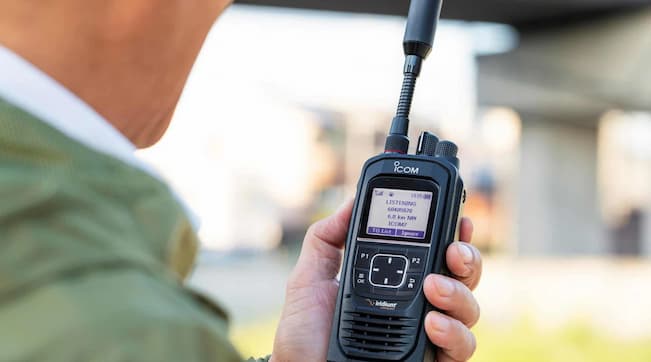We live in a world where few would leave the house without their mobile phone. But no matter how much smartphones have changed the nature of how we keep in contact with the world, sometimes they are not the best option, especially when you’re out of range.
There are many places across Australia where mobile coverage is zero, and that is when two-way mobile radio becomes invaluable. They’re not just a thing of camping trips or tradie toolboxes. These compact machines still offer something that even the most flashy phone cannot: reliable, immediate communication when and where it counts.
What Are Two-Way Radios?
Two-way radios are short-distance communication tools that enable users to send and receive voice messages on radio frequencies. Unlike your run-of-the-mill one-way gear (such as AM/FM radios), these support two-way dialogue in real-time. You press a button to talk, release it to listen, easy as can be.
They operate on either the VHF (Very High Frequency) or the UHF (Ultra High Frequency) bands, the UHF models being better suited to urban environments or heavy bushland, as they can penetrate obstructions. The VHF models would be most suited to open terrain, such as beach fronts or farmland.
The coverage of some radios is a few kilometres only, but others can be much longer, with the weather and terrain. Most are constructed to withstand drops, rain, and dust, and more costly models occasionally have features like GPS location tracking, weather alerts, emergency beacons, and long battery life.
Uses

You’ll find two-way radios used across a range of industries and activities. For outdoor adventurers, they’re almost essential. Whether you’re hiking through the Blue Mountains or camping along the Nullarbor, staying in touch with your group is a must, especially when mobile reception is spotty at best.
In construction and trade, radios are relied upon daily. The workers on large construction sites depend on them to relay information, call out a question, or signal danger without hesitation. As radios are not network-based, there is no issue with congestion or downtime. It’s just efficient, clear communication—when lives are at stake.
They are used by security teams to communicate in real time among venues, events, or shopping centres. They enable the staff to respond quickly, be it dealing with overcrowding, emergencies, or simply transferring instructions.
Families also employ two-way radios for bushwalks, caravan holidays, or car rides. They are useful particularly for kids who are still too young to have a phone, but at the same time require some way of being able to call Mum and Dad.
Benefits
One of the main reasons two-way mobile radio is still going strong is its reliability. It doesn’t require mobile towers or Wi-Fi. That freedom allows you to use them out in the middle of nowhere, out on a rural property, or out in areas where natural disasters have destroyed infrastructure.
They also offer real-time communication. No dialling, no ring, push and talk. That is something that life-threatening situations, high-risk occupations, or just not having a great deal of time to futz around with apps can appreciate.
Durability is another aspect where they excel. Most two-way radios are built for the real world, rain, dust, rough treatment, and so on. Unlike fragile smartphones, they’re built to get roughed up and keep working. Some are even waterproof and buoyant if dropped in water, making them perfect for boating or fishing trips.
They’re also cost-effective in the long term. There are no contracts or data plans once the initial buy is made. That’s good for companies looking to outfit teams or families wishing for an inexpensive communication option.
Another underrated benefit is privacy. Two-way radios use direct transmission between a unit and another, and there are several that offer multiple channels or privacy codes to avoid unwanted listening by other people in the vicinity. This makes them ideal in environments where confidential or sensitive communication is required.
Ease of use is the cherry on top. There is no learning curve or technical knowledge needed. If you can press a button, you can use a radio. That makes them useful to users of any age, from kids to grandparents.
With the invention of smartphones and cool apps, two-way radios have well and truly earned their place in today’s era. They are simple to operate, rugged, and highly reliable—especially during cases where your phone can’t compete.
Even though the basics haven’t changed that much, modern two-way radios are loaded with features to meet modern demands. Some include USB-C charging, long-life lithium battery, VOX (voice-activated transmit), and group call modes. Others include GPS location sharing, perfect for groups working in isolated or hazardous terrain.
Whether you’re working on a massive building site, heading out into the outback, or just need a simple way of staying in contact with your crew, two-way radios give you exactly what you need. Real-time voice contact, rugged construction, and freedom from mobile coverage make them an unbeatable tool in a myriad of circumstances.
The next time you are away on holiday or kitting out your team, do think about bringing a two-way radio along. It might be the brightest bit of kit you ever bring with you.
























